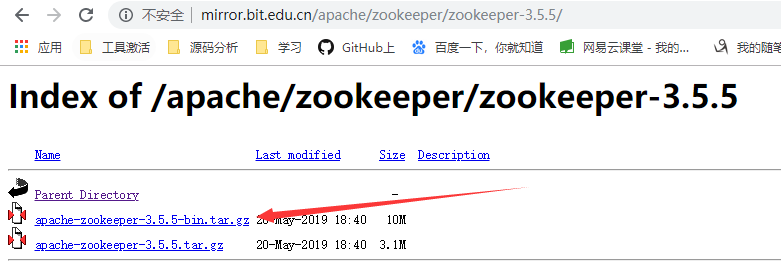How do you set a custom HTTP header (not SOAP header) dynamically on the client side when using Spring-WS?
问题:
回答1:
public class AddHttpHeaderInterceptor implements ClientInterceptor {
public boolean handleFault(MessageContext messageContext)
throws WebServiceClientException {
return true;
}
public boolean handleRequest(MessageContext messageContext)
throws WebServiceClientException {
TransportContext context = TransportContextHolder.getTransportContext();
HttpComponentsConnection connection =(HttpComponentsConnection) context.getConnection();
connection.addRequestHeader("name", "suman");
return true;
}
public boolean handleResponse(MessageContext messageContext)
throws WebServiceClientException {
return true;
}
}
config:
<bean id="webServiceTemplate" class="org.springframework.ws.client.core.WebServiceTemplate">
...
<property name="interceptors">
<list>
<bean class="com.blah.AddHttpHeaderInterceptor" />
</list>
</property>
</bean>
回答2:
ClientInterceptor works great for static header value. But it is not possible to use it when a different value should be applied per each request. In that case WebServiceMessageCallback is helpful:
final String dynamicParameter = //...
webServiceOperations.marshalSendAndReceive(request,
new WebServiceMessageCallback() {
void doWithMessage(WebServiceMessage message) {
TransportContext context = TransportContextHolder.getTransportContext();
CommonsHttpConnection connection = (CommonsHttpConnection) context.getConnection();
PostMethod postMethod = connection.getPostMethod();
postMethod.addRequestHeader( "fsreqid", dynamicParameter );
}
}
回答3:
When using spring integration 3 and spring integration-ws, the following code can be used for handling the request:
public boolean handleRequest(MessageContext messageContext)
throws WebServiceClientException {
TransportContext context = TransportContextHolder.getTransportContext();
HttpUrlConnection connection = (HttpUrlConnection) context
.getConnection();
connection.getConnection().addRequestProperty("HEADERNAME",
"HEADERVALUE");
return true;
}
The Interceptor can be connected to the outbound gateway in the following way:
<ws:outbound-gateway ...
interceptor="addPasswordHeaderInterceptor" >
</ws:outbound-gateway>
<bean id="addPasswordHeaderInterceptor class="com.yourfirm.YourHttpInterceptor" />
回答4:
Example Method with java 1.8: How to add a HTTP header:
public void executeObjectWebservice(String id) {
ExecuteObject request = new ExecuteObject();
getWebServiceTemplate().marshalSendAndReceive("http://url/webservice-test/uc4ws",
new ObjectFactory().createExecuteObject(request), new WebServiceMessageCallback() {
public void doWithMessage(WebServiceMessage message) throws IOException {
TransportContext context = TransportContextHolder.getTransportContext();
HttpUrlConnection connection = (HttpUrlConnection) context.getConnection();
connection.addRequestHeader("ID", id);
}
});
}
Explanation: Use the getWebServiceTemplate().marshalSendAndReceive as described for example here: https://spring.io/guides/gs/consuming-web-service/
First parameter is the URI, second is the object which shall be send with the request. As third Parameter you can add as function
new WebServiceMessageCallback()
where you override the public void doWithMessage. This method gets called before the request is sent. Within you can access the message and add a request Header through
TransportContext context = TransportContextHolder.getTransportContext();
HttpUrlConnection connection = (HttpUrlConnection) context.getConnection();
connection.addRequestHeader("ID", id);
回答5:
Spring's webServiceTemplate.marshalSendAndReceive(request) method internally uses HttpComponentsMessageSender to send the SOAP message over the network and this further uses WebServiceConnection to make http connection with the server. All you have to do is to write your own custom HttpComponentsMessageSender and set the cookie inside postMethod.
Custome sender code:
package com.swap.ws.sender;
import java.io.IOException;
import java.net.URI;
import javax.annotation.Resource;
import org.apache.http.client.methods.HttpPost;
import org.apache.log4j.Logger;
import org.springframework.stereotype.Service;
import org.springframework.ws.transport.WebServiceConnect ion;
import org.springframework.ws.transport.http.HttpComponen tsConnection;
/**
*
* @author swapnil Z
*/
@Service("urlMessageSender")
public class CustomHttpComponentsMessageSender extends
org.springframework.ws.transport.http.HttpComponen tsMessageSender {
private static Logger _logger = Logger.getLogger("");
@Override
public WebServiceConnection createConnection(URI uri) throws IOException {
String cookie = null;
HttpComponentsConnection conn = (HttpComponentsConnection) super
.createConnection(uri);
HttpPost postMethod = conn.getHttpPost();
cookie = "<Your Custom Cookie>";
postMethod.addHeader("Cookie", cookie);
return conn;
}
}
Spring Configuration :
<bean id="messageFactory" class="org.springframework.ws.soap.saaj.SaajSoapMe ssageFactory" />
<bean id="marshaller" class="org.springframework.oxm.jaxb.Jaxb2Marshalle r">
<property name="contextPath" value="com.swap.provision" />
</bean>
<bean id="webServiceTemplate" class="org.springframework.ws.client.core.WebServi ceTemplate">
<constructor-arg ref="messageFactory" />
<property name="marshaller" ref="marshaller"></property>
<property name="unmarshaller" ref="marshaller"></property>
<property name="messageSender" ref="urlMessageSender"/>
<property name="defaultUri" value=<Server URL> />
</bean>
After this I simply get bean webServiceTemplate and call marshalSendAndReceive method. So every request will have its custom cookie set before making HTTP call.
回答6:
Actually, it is an updated version of the @Tomasz's answer, but provides a new Spring-WS API, Java 8 shortcuts, and cares about creating a WebServiceMessageCallback instance with a separate method.
I believe it is more obvious and self-sufficient.
final class Service extends WebServiceGatewaySupport {
/**
* @param URL the URI to send the message to
* @param payload the object to marshal into the request message payload
* @param headers HTTP headers to add to the request
*/
public Object performRequestWithHeaders(String URL, Object payload, Map<String, String> headers) {
return getWebServiceTemplate()
.marshalSendAndReceive(URL, payload, getRequestCallback(headers));
}
/**
* Returns a {@code WebServiceMessageCallback} instance with custom HTTP headers.
*/
private WebServiceMessageCallback getRequestCallback(Map<String, String> headers) {
return message -> {
TransportContext context = TransportContextHolder.getTransportContext();
HttpUrlConnection connection = (HttpUrlConnection)context.getConnection();
addHeadersToConnection(connection, headers);
};
}
/**
* Adds all headers from the {@code headers} to the {@code connection}.
*/
private void addHeadersToConnection(HttpUrlConnection connection, Map<String, String> headers){
headers.forEach((name, value) -> {
try {
connection.addRequestHeader(name, value);
} catch (IOException e) {
e.printStackTrace(); // or whatever you want
}
});
}
}
回答7:
The following fragment has been tested with Spring 4.0. It appends a WebServiceMessageCallback to a org.springframework.ws.client.core.WebServiceTemplate
final String DYNAMICVALUE = "myDynamo";
WebServiceMessageCallback wsCallback = new WebServiceMessageCallback() {
public void doWithMessage(WebServiceMessage message) {
try {
SoapMessage soapMessage = (SoapMessage)message;
SoapHeader header = soapMessage.getSoapHeader();
header.addAttribute(new QName("myHeaderElement"), DYNAMICVALUE);
} catch (Exception e) {
e.printStackTrace();
}
}
};
JAXBElement<MyWsResponse> response = (JAXBElement<MyWsResponse>)
wsTemplate.marshalSendAndReceive(MyWsOP, wsCallback);




